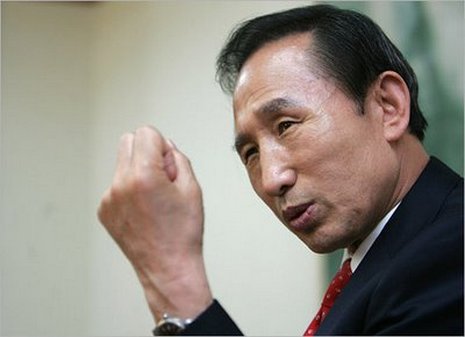The Malaysian government controls GLCs through its government-linked investment companies (GLICs) — gargantuan and powerful investment arms including Khazanah Nasional, Permodalan Nasional Berhad — and the Ministry of Finance.
GLC market presence varies by industry, as measured by share of value-added. Based on data from publicly listed companies, Asian Development Bank lead economist Jayant Menon estimates that in 2012 GLCs accounted for 93 per cent of income in utilities, 80 per cent in transportation and warehousing, and over 50 per cent in agriculture, banking, formation and communications, and retail trade. Menon further notes that GLCs invest at a higher rate than private companies due to their superior reserves and political connections, which give them added leverage and privilege. Menon argues that GLCs crowd out private capital, significantly accounting for Malaysia’s anaemic private investment rate since the 1997–98 Asian financial crisis.
The statistical finding that GLCs crowd out more investment than they stimulate makes sense intuitively. It also appears to be consistent with the economic situation in Malaysia. But Menon’s data limits his empirical analysis to publicly listed companies. The omission of privately held businesses, especially in manufacturing and in service industries such as retail, probably leads him to overstate the dominance of GLCs.
Yet the Malaysian government cannot deny the crowding-out phenomenon. As part of its GLC Transformation Program the government has committed itself to divesting certain GLCs. But, as expected, the divestment project targets smaller entities within its massive portfolio and has progressed behind schedule.
The durability of GLCs as a domain of government policy underscores the need for reform prescriptions to be informed by historical and political economy perspectives and to acknowledge GLCs’ socio-political mandate. Developing the Bumiputera (ethnic Malay) Commercial and Industrial Community (BCIC) has been at the forefront of policy since the New Economic Policy was launched in 1971. The BCIC passed through various phases, from reliance on state development agencies, to heavy industry, then to privatisation from the late 1980s until the Asian financial crisis, which saw the renationalisation of many failed companies.
These entities, rebranded as government-linked companies, have become the primary agents for the BCIC agenda, which remains, like it or not, an unfinished business and political imperative. In other words, affirmative action, through managerial development and preferential procurement, is deeply embedded and cannot be drastically rolled back.
Interestingly, criticisms of the BCIC never oppose the policy objective of Bumiputera participation and ownership. Instead arguments typically assume that scaling down GLCs, divestment and privatisation, and rolling back preferential treatment will jolt Bumiputera entrepreneurs and capitalists into emerging as a competitive, innovative force. Competitive Bumipitera capitalists, it is argued, should be the true beneficiaries of affirmative action. But this argument is invariably asserted as an article of faith, unsupported by evidence. Logically, the shortfalls of the BCIC agenda drive the conclusion that privatisation would diminish Bumiputera participation.
If the policy has failed to produce a critical mass of competitive Bumiputera entrepreneurs — as it was widely supposed it would — wouldn’t sudden removal almost definitely cause a downturn in Bumiputera participation? This would be a politically unpalatable outcome regardless of any boost it might bring to private investment rates. Failure or reluctance to openly acknowledge these eventualities and their political consequences often precludes robust examinations of GLC performance and their preparedness for phasing out their role in supporting the BCIC.
Malaysia’s GLC policy, on the other hand, preserves its role in promoting the BCIC, but also introduces its share of equivocation. The GLC Transformation Program articulates merit-based selection as a key feature of the new government policy, implicitly distinguishing the current regime from former practices that bred inefficiency. This is only partly correct: ‘merit-based’ means selecting more capable Bumiputera managers, subcontractors and vendors over less capable Bumiputera managers, subcontractors and vendors.
Amid the misinformation, the program lacks a clear plan on how to move away from overt Bumiputera preference. The government needs to come clean and acknowledge that ‘merit-based’ selection remains exclusive to Bumiputera participations. A fuller transformation would entail ensuring that these Bumiputera business empowerment programs are conducted effectively, so that transition plans can also be developed to phase out overt ethnic preferences.
The GLC Transformation Program, under the oversight of the government investment agency Khazanah, involves the 17 largest and most strategically important GLCs, including Tenaga Nasional (power), Telekom (telecommunications), Malaysia Airlines, diversified conglomerate Sime Darby, CIMB Bank and Maybank.
Market conditions and the business performance of these GLCs vary. Some, such as CIMB, Maybank and Axiata (under Telekom) are expanding to be regional players, while others are confronted by structural challenges or, like Malaysia Airlines, beleaguered by recent tragedies.
Internal reviews of GLCs have written glowing reports. It is not surprising that GLCs generally outperform private companies, given their structural and political advantages. Also, GLCs have not, in the past decade, been engaged in the pervasive profligacy and profiteering seen in the 1990s.
GLCs continue to serve key roles providing services, generating profits for GLICs and other stakeholders, serving as training grounds for managers, directors and entrepreneurs through the employment they offer, and by providing linkages through procurement and subcontracting. But the efficacy and integrity of these programs has not been rigorously and independently analysed. Too much of the GLCs’ and GLICs’ operational performance, financial flows and pursuit of their socio-political mandate remain under-researched.
Hwok-Aun Lee is Senior Lecturer in Development Studies at the University of Malaya.
This article appeared in the most recent edition of the East Asia Forum Quarterly, ‘The state and economic enterprise’.

